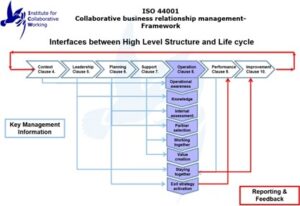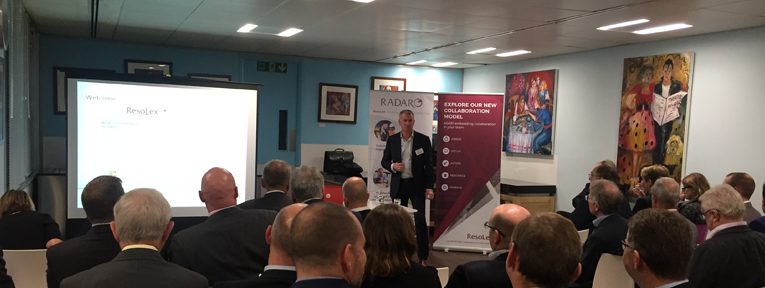Speaker: David Hawkins, Operations Director and Knowledge Architect of ICW (Institute for Collaborative Working)
David began his presentation by comparing the contrasting perceptions of collaboration of synchronized swimming with sharks at one end and a team hug at the other. Neither is a true picture of what collaboration really means.
He explained that as business is shifting, old adversarial practices are proving inadequate to meet the challenges of organisations seeking to compete and survive in the 21st century.
In construction, whilst individuals often collaborate, organisations do not. There is too much reliance on informal relationships which disappear when the people move on. The aim of the standard is to establish formal structures so that the relationships are maintained irrespective of the people involved. The Standard gives companies a language and a platform upon which to develop a more effective way of working.
As can be seen from the slide deck, the standard is designed around a number of stages, each one asking the parties to think and plan how they will work together. The structure of the model is illustrated below.

Some of the useful insights from the presentation were as follows:
- That most organisations are inefficient and waste a great deal of inefficient
- There is and assumption that people will use their common sense – Voltaire commented back in 1694, ‘common sense is not so common’.
- Constructive conflict can drive innovation. This occurs when collaborative relationships are really working effectively.
- Universities are still teaching a 40 year old command and control model ill suited to the modern complex economy. A survey of project managers highlighted that the biggest challenges are with relationships. One of the real challenges is the lack of skills to implement the collaborative process.
- The Standard is not a set of proformas. The danger with such an approach that is the organizations mechanism not an external consultant.
- Risk – Observation that banks and insurance organisations are going to be much more concerned about relationships risk in the futures as they begin to understand the value created by effective partnerships.
- Contracts – tend to be written in anticipation of failure rather than seeking to drive the conditions for success. David expressed the view that NEC4 has missed the opportunity to push the industry to push the boundaries and encourage the client and the contractor to approach public projects in a different way.
David concluded the session by reiterating the point that the key to success is the belief of the senior leadership. He emphasized the point that simply having the certificate on the wall is largely a waste of energy. The objective must be to use the Standard to build a better business.

